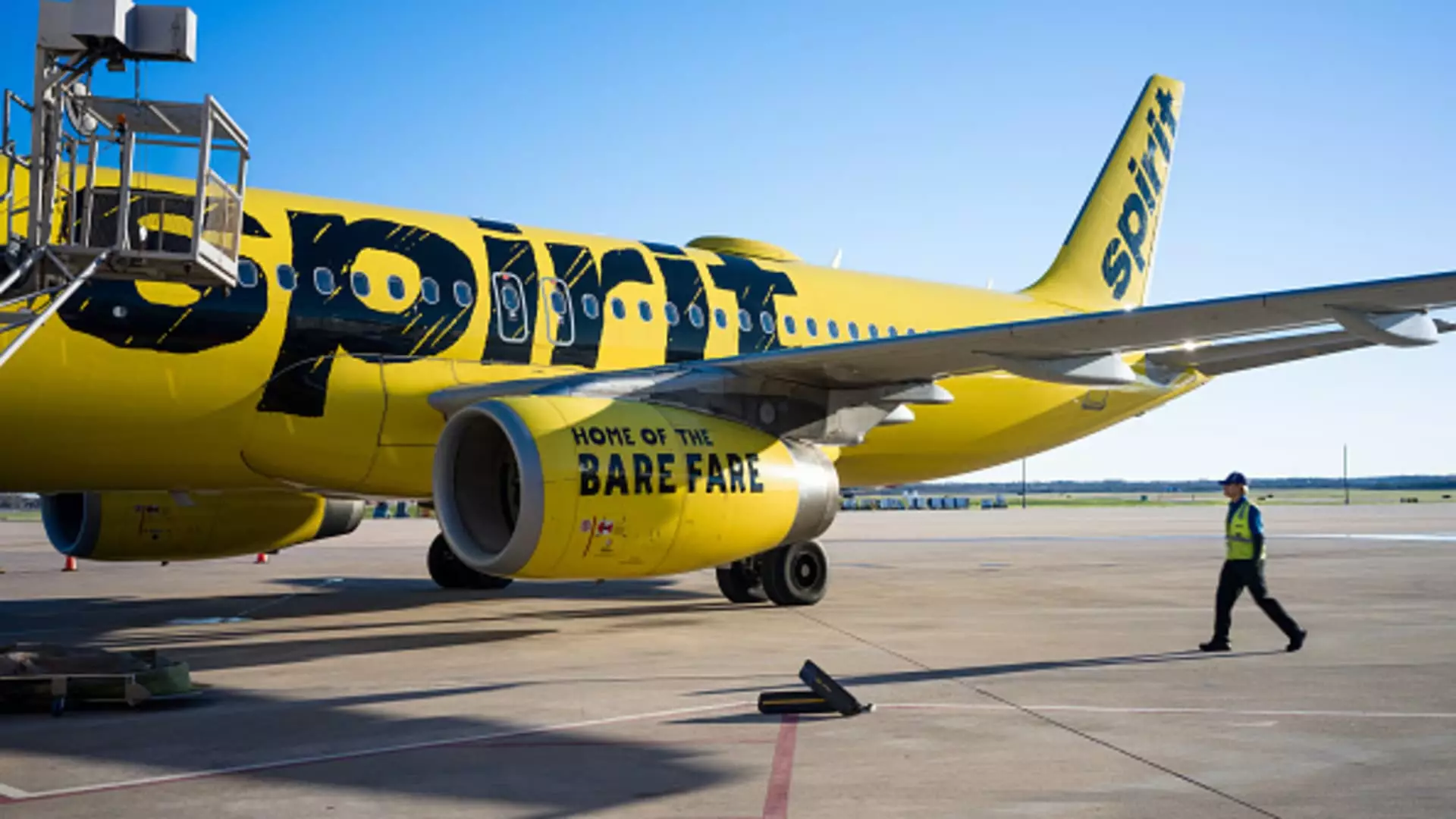Spirit Airlines: Navigating Financial Turbulence Amid Debt Challenges

On Friday, Spirit Airlines revealed a significant development in its ongoing battle with financial challenges. The airline successfully negotiated with its credit card processor to extend the timeline for debt refinancing until December—an agreement that came just hours before the looming deadline. This delay is a critical lifeline for Spirit, particularly after the company announced it had tapped into the entirety of its $300 million revolving credit facility earlier in the week. Despite this temporary cushion, which is expected to elevate its liquidity to over $1 billion by year-end, the company’s financial situation remains precarious.
Spirit has actively underscored that it is in “constructive discussions” with its senior secured note holders, who are set to see their investments mature in 2025, alongside the holders of convertible senior notes due 2026. This proactive approach reflects the airline’s recognition of the urgency needed in stabilizing its financial footing. However, the repeated extensions of deadlines paint a clearer picture of the urgent and ongoing challenges that Spirit Airlines faces in the current landscape.
The grim reality of Spirit Airlines’ financial instability was further illustrated when its stock plummeted to a new low on Friday. Closing at roughly $1.50 per share, the decline represents a staggering drop of over 90% this year alone. Notably, this decrease comes in the backdrop of substantial operational cuts, including furloughing staff and reducing its flight schedule—a direct response to the airline’s shrinking financial base.
Additionally, the grounding of many aircraft due to a Pratt & Whitney engine recall has severely impacted operational capacity and revenue generation. With passenger bookings reported to be below expectations, the overall operational outlook looks dire. The situation has been exacerbated by the failed acquisition attempt by JetBlue Airways, which was thwarted by a federal antitrust ruling that dealt yet another blow to Spirit’s growth strategy.
As the airline navigates these turbulent waters, speculation about a potential bankruptcy filing has intensified. Reports from The Wall Street Journal earlier this month indicated that such a route is being actively considered. This reflects not only the gravity of Spirit’s fiscal challenges but also the broader implications for the budget airline market as a whole.
The airline industry’s recovery from the COVID-19 pandemic has been uneven, and budget carriers like Spirit have found it especially tough to rebound. If Spirit ultimately opts for bankruptcy, it would not only reshape its corporate structure but could significantly influence market dynamics and competition going forward.
While Spirit Airlines has managed to secure a temporary reprieve with its refinancing extension, the underlying financial difficulties continue to loom large. The simultaneous pressures from operational disruptions, low stock performance, and potential bankruptcy considerations highlight the precarious position within which the airline finds itself as 2023 draws to a close.





